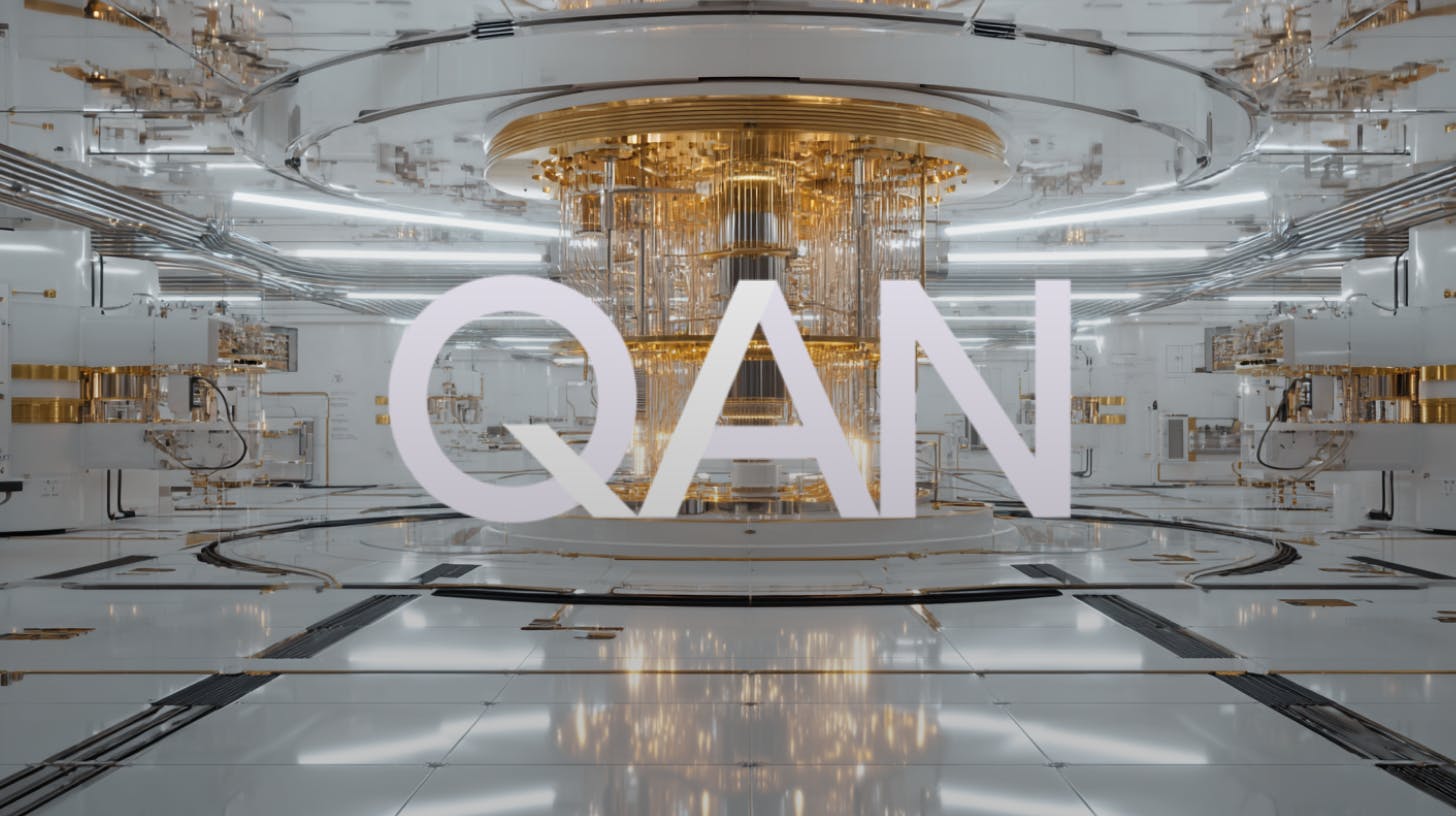What happens when quantum computers become powerful enough to crack the cryptographic foundations securing trillions in digital assets?
According to recent estimates, approximately 6.65 million Bitcoin addresses holding around 25% of the total Bitcoin supply already have exposed public keys, making them vulnerable to future quantum attacks. Ethereum faces an even starker reality, with over 65% of all Ether potentially at risk. This isn’t theoretical speculation anymore. Organizations like NIST, the Federal Reserve, and BlackRock have issued warnings about this looming threat, with BlackRock even updating its Bitcoin ETF prospectus to acknowledge quantum computing risks.
QANplatform, an Estonia-based blockchain platform, announced on November 20, 2025, that its quantum-resistant security protocol, QAN XLINK, has completed a comprehensive cybersecurity audit by Hacken, a blockchain security firm. The audit validates the protocol’s technical approach to protecting digital assets against quantum computing attacks, a problem that most existing blockchain networks have yet to address systematically.
Understanding the Quantum Threat to Blockchain
The vulnerability exists in how blockchain networks currently operate. Every time someone makes a transaction from a wallet, they expose their public key to the network. Think of it like publishing your home address online: once it’s out there, anyone with the right tools can find it. Today’s computers can’t break the encryption that protects the connection between public keys and private keys. But quantum computers, which process information fundamentally differently than traditional computers, could potentially crack these encryptions in hours or days rather than the thousands of years it would take current machines.
This creates what security researchers call the “store now, decrypt later” problem. Bad actors can record encrypted blockchain transactions today and wait until quantum computers become powerful enough to break the encryption and steal the funds. The timeline matters because quantum computing development is accelerating. While experts debate when “Q-Day” (the point when quantum computers become powerful enough to break current encryption) will arrive, the consensus has shifted from “maybe decades away” to “possibly within years.”
The scope of exposure varies by blockchain architecture. Bitcoin addresses that have never sent transactions remain relatively safe because their public keys haven’t been broadcast to the network. However, addresses that have made outgoing transactions, or those using older Pay-to-Public-Key formats, have already exposed their public keys. For Ethereum, the exposure rate is even higher due to how the network handles account creation and transactions. Solana, Cardano, and other major blockchains face similar vulnerabilities, creating a systemic risk across the entire digital asset ecosystem estimated at over $2 trillion in total market capitalization.
What QAN XLINK Actually Does
QAN XLINK functions as a cross-signer protocol that bridges existing Ethereum-compatible wallets with quantum-resistant cryptography. Instead of requiring users to abandon MetaMask, Trust Wallet, or other popular wallet interfaces, the protocol adds a quantum-safe signature layer on top of existing infrastructure. The technical implementation uses ML-DSA (Module-Lattice-Based Digital Signature Algorithm), which NIST published as FIPS 204 in its post-quantum cryptography standards.
The lattice-based approach to cryptography works differently than the elliptic curve cryptography that secures current blockchains. While traditional encryption relies on the difficulty of factoring large numbers or solving discrete logarithm problems (tasks quantum computers could handle efficiently), lattice-based cryptography depends on mathematical problems that remain difficult even for quantum machines. Specifically, it’s based on finding the shortest vector in a high-dimensional lattice, a problem where quantum computers don’t offer meaningful advantages.
QANplatform claims QAN XLINK provides the only solution that combines Ethereum compatibility with guaranteed quantum-safe migration. This matters because Ethereum’s ecosystem represents the largest concentration of decentralized applications, DeFi protocols, and NFT infrastructure in Web3. Creating a migration path that doesn’t require rebuilding these applications from scratch could prove significant if quantum threats materialize on expected timelines.
The Hacken Audit Findings
Hacken’s audit examined the QAN XLINK protocol for security vulnerabilities, code quality, and implementation of the ML-DSA algorithm. The audit report, available publicly, validated the protocol’s architecture and implementation. Yevheniia Broshevan, Hacken’s Co-founder and CEO, stated that
the quantum threat is no longer a distant concern, it demands proactive preparation for the whole web3 ecosystem.
Hacken has conducted security audits for major Web3 entities including the Ethereum Foundation, MetaMask, and Binance since 2017, reviewing over 1,500 projects. The firm holds ISO certification as an auditor, giving its assessments weight in an industry where security breaches have cost users billions in lost funds. The audit’s completion adds external validation to QANplatform’s technical claims, though it doesn’t eliminate all questions about adoption challenges or competitive positioning.
The timing coincides with broader industry recognition of quantum risks. BlackRock’s decision to update its Bitcoin ETF documentation acknowledging quantum computing as a potential risk signal that institutional investors are beginning to factor these threats into their risk models. When the world’s largest asset manager starts warning investors about a technical vulnerability, it stops being a niche concern for cryptographers and becomes a mainstream investment consideration.
Industry Context and Competitive Landscape
QANplatform positions itself as the first blockchain offering both Ethereum compatibility and quantum resistance, but several projects including QRL (Quantum Resistant Ledger), IOTA, and Algorand are working on quantum-resistant blockchains. The difference is that most require building on entirely new architectures rather than providing backward compatibility with Ethereum’s existing ecosystem, which hosts thousands of decentralized applications representing hundreds of billions in locked value.
Johann Polecsak, QANplatform’s Co-Founder and CTO, stated,
“Following the success of our QVM, we’re forging the path to bring post-quantum security to the broader Web3 ecosystem.”
QANplatform is one of the first 20 members of the Linux Foundation’s Post-Quantum Cryptography Alliance and joined Blockchain for Europe in October 2025.
The Reality Check on Quantum Timelines
Current quantum computers have around 100-1000 qubits of computational power. Breaking Bitcoin’s SHA-256 encryption would require an estimated 13 million qubits, while Ethereum’s secp256k1 signatures might be vulnerable to machines with several thousand logical qubits. However, breakthroughs in error correction or qubit stability could compress timelines unexpectedly, and the “store now, decrypt later” concern means waiting until quantum computers exist to implement protections might be too late.
Practical Implications and Adoption Questions
QAN XLINK currently exists as a desktop application that developers can apply to test. Post-quantum cryptographic signatures are typically larger than current signatures, potentially affecting transaction costs and blockchain throughput. The protocol’s success depends on developer and user adoption rates, creating a tragedy of the commons problem where individual users might delay migration due to inconvenience while collective security depends on widespread adoption.
For institutional investors, quantum security is transitioning from theoretical concern to risk management priority. If regulatory frameworks begin requiring quantum-resistant protections for custodial services, adoption curves could accelerate regardless of immediate technical threats.
Final Analysis
QANplatform’s Hacken audit represents incremental progress on a genuine long-term threat. The validation provides technical credibility, and Ethereum compatibility addresses real adoption barriers. However, the quantum threat timeline remains speculative, and the gap between protocol validation and ecosystem adoption is enormous.
The most significant contribution might not be QAN XLINK itself but rather the broader attention it brings to quantum preparedness in blockchain. For users and developers, quantum threats to blockchain security are real and worth monitoring, but probably don’t require immediate panic. The technology to protect against these threats exists and is being validated. What’s missing is coordinated adoption and clear standards.
Don’t forget to like and share the story!
:::tip
This author is an independent contributor publishing via our business blogging program. HackerNoon has reviewed the report for quality, but the claims herein belong to the author. #DYO
:::











